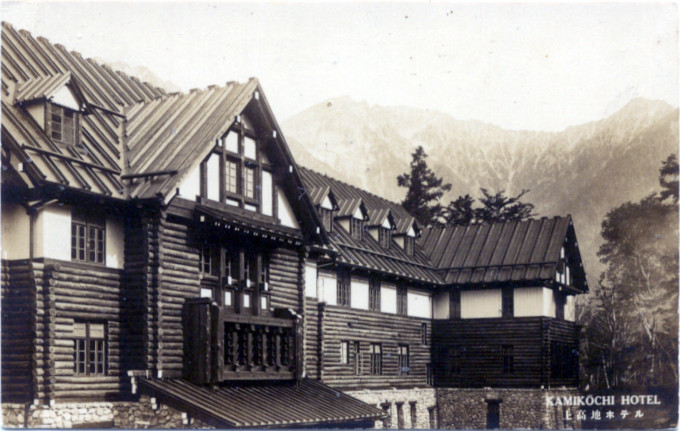
Kamikochi Imperial Hotel, Main Lodge, Matsumoto, c. 1940. The Kamikochi was Japan’s first mountain resort hotel when opened in 1933. It’s lodge-style lines were designed by Takahashi Teitaro who was responsible for the Shiba Park Hotel, the Kawana Hotel, and other notable hostelries.
See also:
Imperial Hotel (1923-1968)
Climbing Mt. Hakuba (Shiro-uma-yama), Nagano, 1928.
“[In 1953] For the first three days, we stayed at Matsumoto in the famous Kamikochi Hotel. Built in the early 1930s in the style of a Swiss mountain hotel, it sat in the shadow of Japan’s highest peak, Yaregatake. The food was excellent French cuisine served in a formal Continental style, the menus in French and Japanese – no English.
“At first, the array of spoons, forks, and knives set at each placed baffled Aoki, but when we told him that he was unlikely to face so formidable an arrangement in the U.S., much less often in the States than in Europe, he seemed relieved.
“… That evening after dinner, we sat on the veranda outside our rooms and watched the sun drop behind the snow-covered peaks.”
– A Teacher’s Tale: A Memoir, by Joe Gilliland, 2015
- Kamikochi Imperial Hotel, brochure, c. 1950.
- Kamikochi Imperial Hotel, brochure, c. 1950.
“Kamikochi Valley, 4725 ft. above sea level, is surrounded by lofty peaks and extends like a broad belt for a distance of about 10 mi. The Kamikochi Hotel stands in such a favorable position that visitors can fully appreciate the wild mountain scenery, the crystal waters of the River Azusa, and the beautiful nearby lakes.”
– Japan: The Pocket Guide, The Japan Travel Bureau, 1946
“Japan awoke to the concepts of mountaineering and trekking when Englishman Walter Weston began exploring the Japan Alps in 1891 and published a popular book on the glories he discovered during his lengthy hikes. Influenced by Weston’s affection for the magnificent allure of these untouched mountains, Japanese mountaineers increased dramatically thereafter.
“In 1933, Imperial Hotel, Ltd. opened a small hotel there with a luxurious assortment of resort facilities which immediately attracted affluent international and local city dwellers and members of the imperial family hoping to get out of the oppressive summer heat and bask in the beauty of the fresh mountain scenery.
“Kamikochi is home to a number of places worth seeing on walks to enjoy its natural beauty. These include the famous Kappa Bridge located in the central part of Kamikochi and a symbol of the area, Taisho Pond, with its impressive decayed trees still standing in the pond, and the mystical Myojin Pond, which has Hotaka Shrine Inner Alter on the side.
“On your way, you can also catch a glimpse of the area’s history as you pass by the relief portrait of Walter Weston, the English missionary who spread the beauty of the Japan Alps to the world.
“Here, you may immerse yourself in nature, enjoying the views of the Hotaka Mountain Range, Mt. Yakedake, and other famous peaks from Kappa Bridge, at an elevation of 1,500 m, the pure waters of the Azusa River, and the verdure and flowers of the different seasons.”
– Kamikochi Imperial Hotel web site, 2014
“In the early days, the Kamikochi valley was only accessible via a 44 km long road that passed the steep Tokugo Pass whilst during the feudal Edo Period (1603-1868), the Matsumoto fief had logged off a large section of the natural forest. During the initial years of the modern Meiji state (1868-1912), however, the natural forests recovered as the centralized government restricted logging activities.
“Nevertheless, even as logging stopped, roads and hydroelectric dam construction began in the valley, bringing workers and tourists alike. In 1909, 1300 tourists visited Kamikochi as the first large tourist party; most of them went there to visit the hot springs at the foothills of Mt. Yake.
“Subsequent efforts to connect Kamikochi to the urban centres culminated in the opening of a bus service from Matsumoto to Kamikochi via the Kama Tunnel in 1933. This continues to be the main mode of tourist transport in the valley today.”
– Tourism Development in Japan: Themes, Issues and Challenges, edited by Richard Sharpley & Kumi Kato, 2021


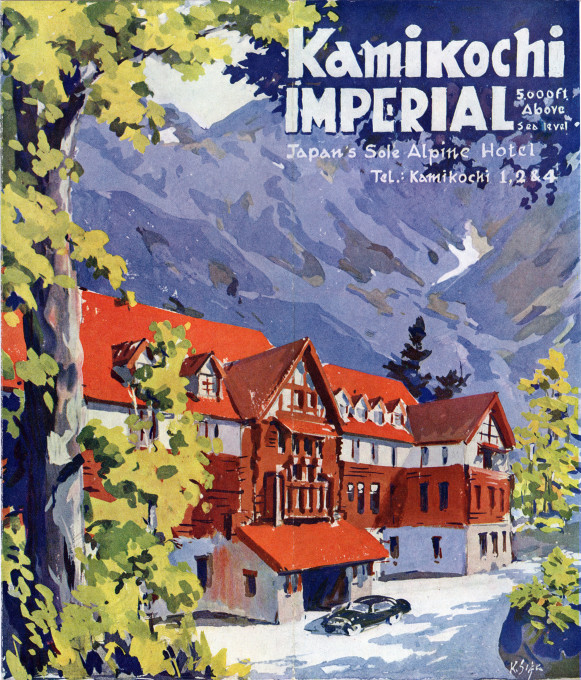
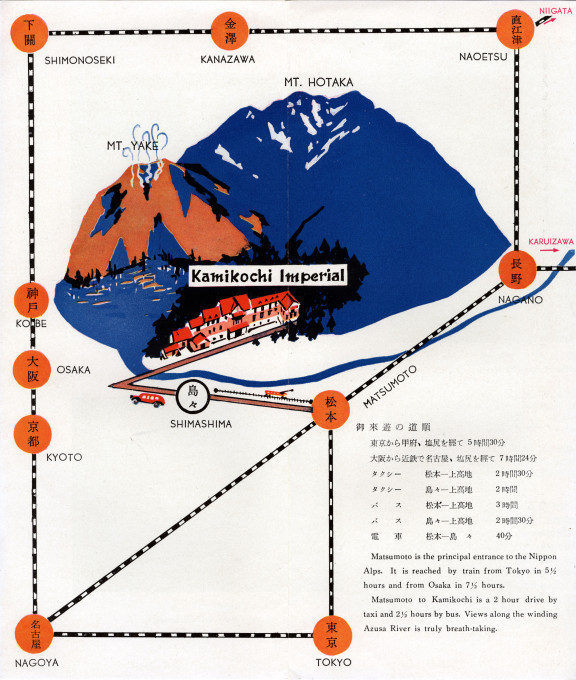
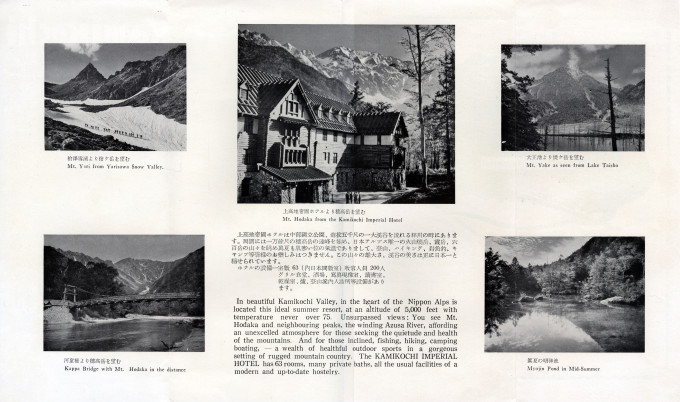
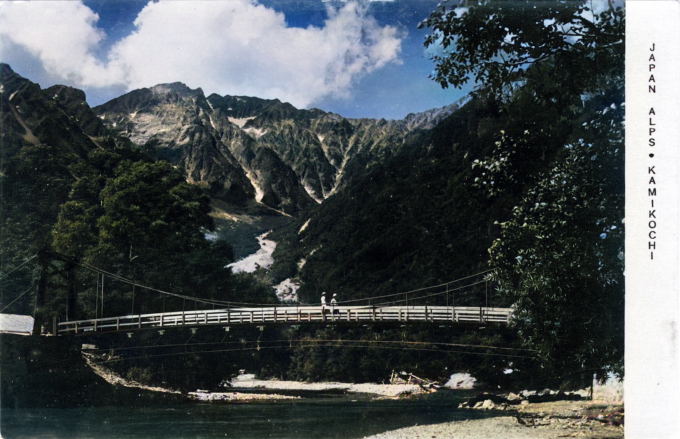
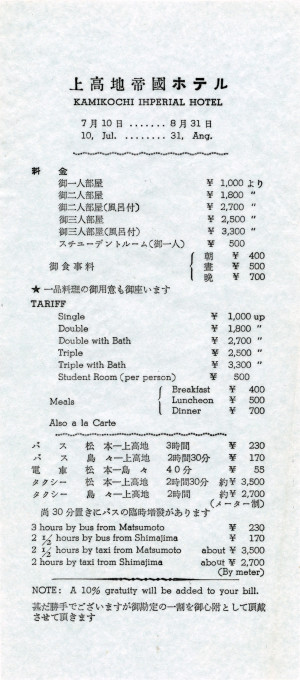
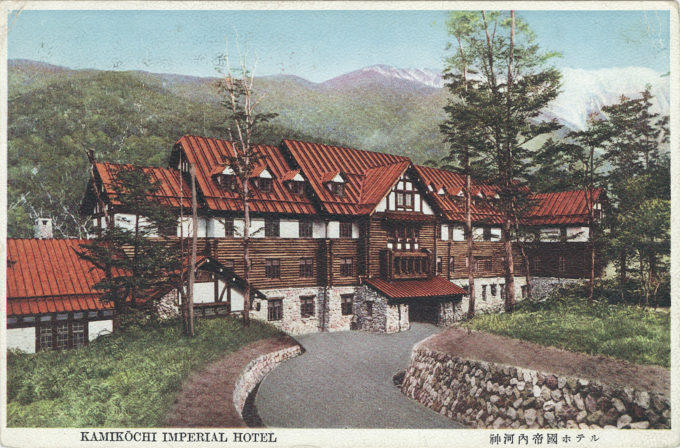
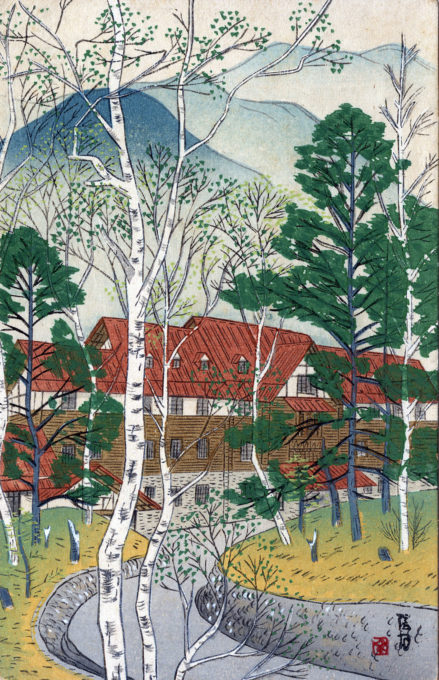
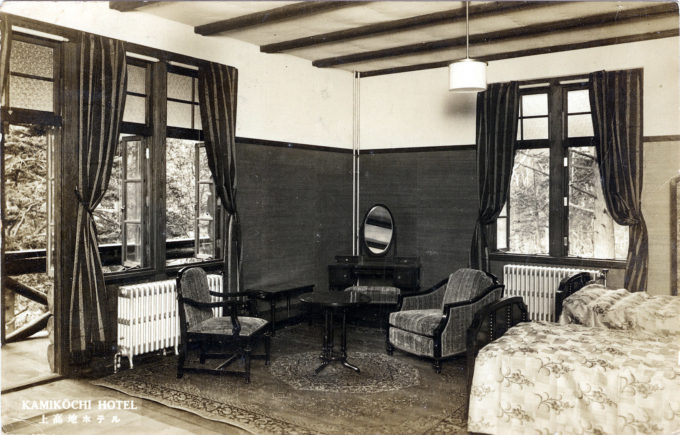
Pingback: Hotel Shiga Heights, Nagano, c. 1940. | Old Tokyo